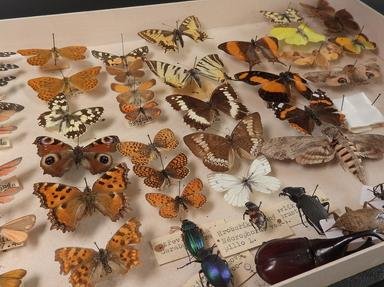It's summer, so the first insect we come across is one that's heard more often than it's seen. It creates noise by stridulation, meaning that it must be a
. We have more luck when we spot Vanessa atalanta, more commonly known as the
.
Beetles are very common and we see Britain's largest example, known as the
beetle, and some decaying logs encourage us to look for the
beetle. Passing a pond enables us to cross the
off our list as we see one hovering above the water.
Although Forficula auricularia, better known as the
, tends to hide away during the day, moving some damp foliage unearths one or two, who scurry away quickly. Rather more popular with most of us is the
, a favourite of gardeners as it devours aphids. Also found in gardens, though less welcome, is Lasius niger, called the black or garden
, and rarely seen singly.
There are more than twenty different types living in the UK of the next insect we see, with the most common being the white-tailed, tree, red-tailed and common carder all of which have the name
following.
It's getting darker now, so we can see some of the more nocturnal insects. The first one is an ungainly creature which is nicknamed 'daddy longlegs' but is actually a type of
. Although it is mainly brown in colour, we also notice a specimen of Cerapteryx graminis, a type of
, before heading home, guided by the light emitted by another beetle, called the
in everyday language.
